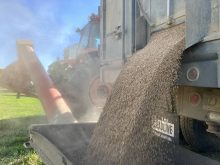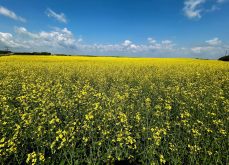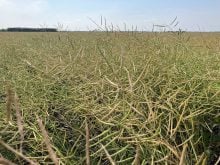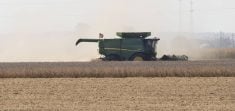Reuters – Buoyed by strong demand, Brazilian farmers are poised to expand their soybean area for the 15th consecutive year, a survey by agribusiness consultancy Datagro released July 30 showed.
The area planted with soybeans in the world’s largest producer and exporter is expected to increase by four per cent to 40.57 million hectares in the 2021-22 cycle, Datagro said.
Brazil will produce an estimated 144.06 million tonnes of soybeans in next season, which farmers will begin to plant around September, Datagro forecast. If confirmed, next year’s production, which is harvested starting around late January, would be five per cent higher than the 136.96 million tonnes of the estimated output in 2021, Datagro said.
Read Also

Local farm businesses, groups look forward to Manitoba Ag Days 2026
Most of agriculture is seemingly at Manitoba Ag Days each January: Manitoba agribusinesses and farm groups look forward to connecting with farmers at the 2026 show.
Brazil’s first corn plantings will be expanded by an estimated four per cent to 4.56 million hectares in the new season, as demand for the cereal, a key ingredient to make livestock feed, remains strong, projections show.
Based on regular weather patterns, Brazil’s first corn crop in the 2021-22 cycle will reach an estimated 28.83 million tonnes, 16 per cent higher than the 24.91 million tonnes produced in the previous cycle, the consultancy said.
Brazil’s second corn area is also likely to rise by a projected five per cent to 16.37 million hectares in the coming cycle.
In the absence of weather problems, Datagro said Brazilian farmers could increase second corn production to 90.84 million tonnes in 2022, 45 per cent above the projected volume for the current season, when drought and an ill-timed frost damaged a lot of the crop.















